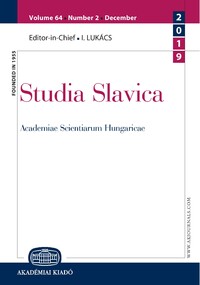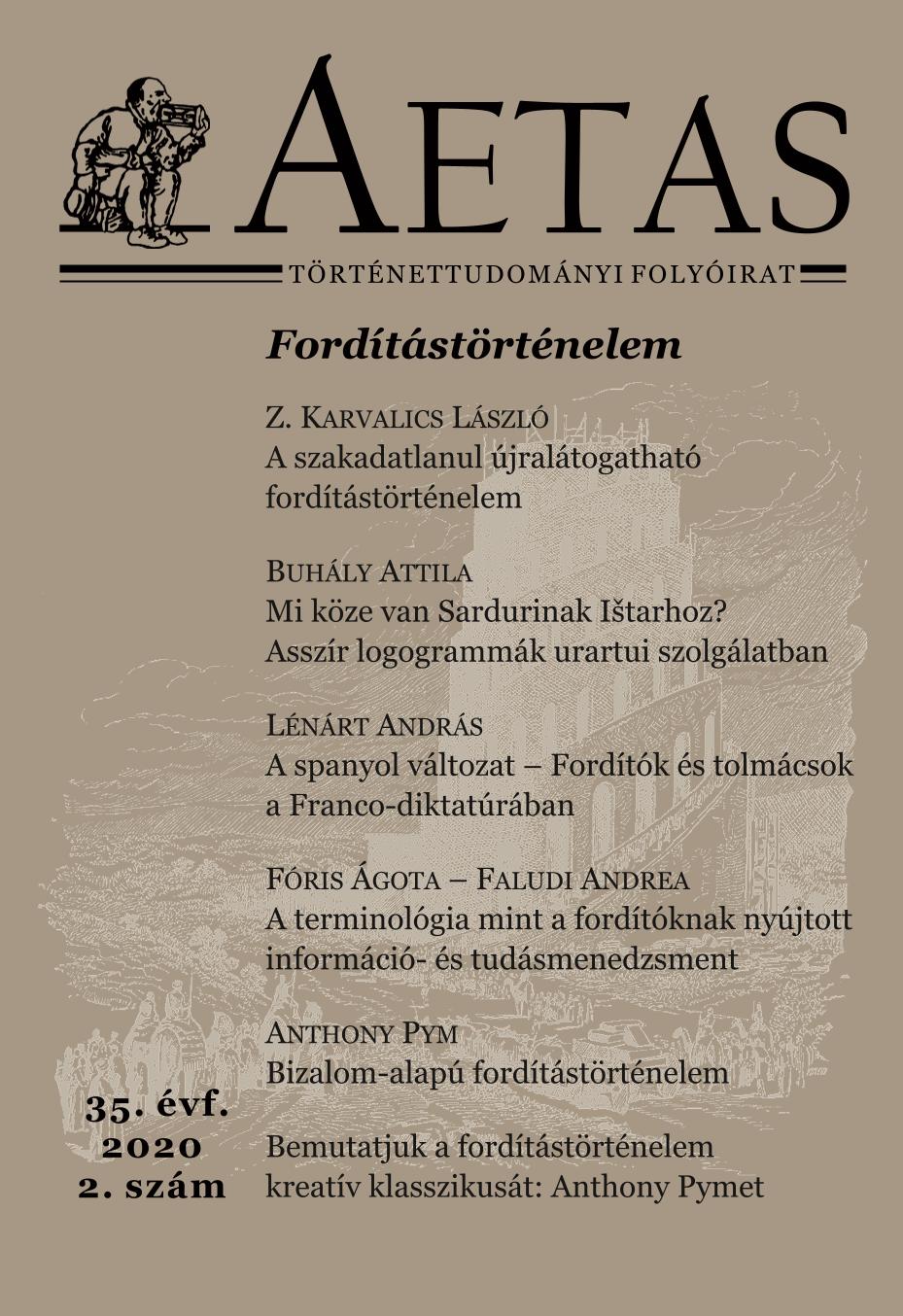
We kindly inform you that, as long as the subject affiliation of our 300.000+ articles is in progress, you might get unsufficient or no results on your third level or second level search. In this case, please broaden your search criteria.


This article aims to survey the secondary literature on the questions of corruption and anticorruption in the Middle Ages. The prominence of these topics in contemporary society has drawn the attention of the media and the public. The question that stimulated this approach was: to what extent did medievalists working on history of medieval society, politics and institutions tackle these phenomena in their research? While some authors are reluctant to accept the validity of these two concepts for the examination of medieval institutions, regarding them as belonging to the premodern or modern age, others have not shied away from employing the terms or describing phenomena pertaining to corruption, and even policies applied during the Middle Ages to prevent it. Various studies and research projects dealing with aspects of political, social and juridical life in France, Italian cities, Germany, and England have contributed valuable insights into the manifestations pertaining to corruption and measures or policies designed to preclude them.
More...
This article explores the specifics of medieval nepotism and favouritism (indirect nepotism) in the Hungarian Kingdom, with a particular focus on its role among the middle and lower nobility, who, on account of their poorer material holdings, were more vulnerable than the magnates, whom kings were able to oppose only rarely. The article argues that while nepotism (more often in its indirect form of favouritism) was a fundamental factor in magnates’ hold on power, and remained in place throughout their lives, the situation for families of the lower nobility was different. Patronage of a family member or friend may advance a young person at the start of their career, but they would subsequently have to rely on their own talents (and sometimes their good luck and judgement at picking the right side in times of conflict) to continue their advancement.
More...
This paper analyses instances of corruption reported in connection with three high Venetian officials of Albania Veneta. The apparent abuse of their mandates to govern the region took place during the first two decades of the fifteenth century, when Venice was establishing direct power over the region. Under such circumstances, these cases were seen as the most infamous misconducts and deeds against the Republic and its subjects. By analysing the conditions that prompted the officials’ corruption, I argue that the officials’ behaviour was not just due to their personal arrogance or individual ambition, but was also prompted by a set of specific socio-political circumstances that generally facilitated corrupt behaviour. Particularly important among these seem to have been the ambiguity of institutional responsibilities, the collision of old and new governing procedures, and the officers’ networks and private connections within the regional society.
More...
This article regards the dating of the Old French version of the Barlaam and Josaphat found in the Athos manuscript from Iviron, 4583 (II, 149), which contains the Greek text of the Barlaam and Josaphat legend, as well as its French translation, and is the only known medieval translation from Old Greek to Old French. This paper follows on from two previous articles published by the same author analysing the historical context of the French translation, and is written in response to a study implying that the Athos context and its dating to the beginning of thirteenth century should be rejected and replaced with an earlier dating, namely to the eleventh century, and a Constantinople context. The present article examines this new hypothesis from a linguistic and historical point of view, and argues that the scripta and the vocabulary do not point towards such early stages of medieval French literature. Moreover, the manuscript scripta has a series of Picard features hinting at the dawn of the thirteenth century. Regarding the proposed Constantinople context, the author observes that the starting point of this hypothesis can be traced to speculative interpretation in the footnotes of old studies.
More...

The present study continues the debate about the authenticity of an inscription from 1481 from Putna Monastery, the only known inscription with coat of arms which Stephen the Great placed at an ecclesiastical edifice. First, the author reviews the arguments against its authenticity: the unusual appellation of the ruler; the contradiction between the monastery’s foundation date given by the inscription and the one given by the chronicles; the name of the hegumen, which is rendered differently by other sources; the unusual placement of the heraldic elements in the coat of arms; the presence of some heraldic elements foreign to the Moldavian realm. The author then refutes all these arguments and, on the contrary, provides arguments drawn from comparisons with two other inscriptions, from 1477 and 1559, which support the authenticity of the inscription from 1481. Finally, the author discusses the hypothesis that the current inscription is an 18th century copy of the original inscription from 1481. The arguments brought in support of this hypothesis were: the very good condition of the inscription, the novel shape of the letters and a fragment of the inscription considered a remnant of the original one. In response, the author shows that the fragment is a later addition from the first decades of the 20th century and that the general aspect of the inscription pleads to its 15th century origin, by comparing it with two other inscriptions from Putna Monastery, one from 1481 and the other from 1757.
More...
Gábor Margittai takes several Transylvanian families into account and introduces them by telling the stories of their suffering under the communist dictatorship.
More...
Vasile Pârvan and his studies of Medieval Romanian history
More...
Romhányi Beatrix: Kolduló barátok, gazdálkodó szerzetesek. Koldulórendi gazdálkodás a késő középkori Magyarországon. Bp., Martin Opitz Kiadó, 2018. 288 p.
More...
This paper aims to reconstitute the pictorial program of some medieval Saxon churches’ sanctuaries, which are Mălâncrav, Curciu, Râşnov and Sibiu, with particular interest on the images regarding the Passion Cycle. The article will try to bring a stylistic and iconographic analysis of the Passion Cycle in the sanctuary, episodes that usually appear on the northern choir wall. Therefore, we aim to highlight the reasons why this Passion narrative was chosen to decorate this part of the sanctuary and what was its role both regarding the place that it occupies, that is near the most sacred place of the church, and also the role it had in the religious services. Given the complexity of the narrative programs and the strong link with the biblical texts, the paintings have a double role, both educational and devotional.
More...
Hungary and the Hungarians: Western Europe’s View in the Middle Ages. By Enikő Csukovits. Viella Historical Research 11. Rome: Viella Libreria Editrice, 2018. 233 pp.
More...
ВЛАДИМИРОВ АДИМИРОВ Г. Великата България на Волга през средните векове [The Great Bulgaria of the Volga during the Middle Ages]. София: Просвета, 2019. 160 с.
More...
The review publishes a paper written in 1946. The author explores that part of the Gesta written by Simon of Kéza during the reign of Ladislaus IV, which deals with the Székelys and the Romanians.
More...
Stanisław A. Sroka: A középkori Bártfa és kapcsolatai Kis-Lengyelországgal. (Magyar történelmi emlékek. Értekezések.) MTA Bölcsészettudományi Kutatóközpont Történettudományi Intézet. Budapest, 2016. 317 oldal
More...
Szende, Katalin: Trust, Authority, and the Written Word in the Royal Towns of Medieval Hungary. Brephols, Turnhout, 2018. 416 old., € 100 (Utrecht Studies in Medieval Literacy 41)
More...
Stopka, Krzysztof: Armenia Christiana: Armenian Religious Identity and the Churches of Constantinople and Rome (4th−15th Century). Kraków, Jagiellonian University Press, 2017. 368 p. (Jagiellonian Studies in History, 8.)
More...
Makai János: Klió labirintusában. A történetírás a Kijevi és a Vlagyimir–szuzdali Ruszról. Eger, Líceum Kiadó, 2018. 255 p.
More...
The review publishes a paper written in 1946. The author explores that part of the Gesta written by Simon of Kéza during the reign of Ladislaus IV, which deals with the Székelys and the Romanians.
More...
The centuries-old expansion of the Serbian state at the expense of Byzantium received its epilogue with the rule of Stefan Dušan. The Serbian king managed to use the opportunity provided by the Roman civil war of 1341–1347, manoeuvring between two warring houses, Kantakouzenos and Palaiologos. It was the weakening of both Byzantium and Bulgaria that gave him the opportunity to, by crowning himself emperor of the Serbs and Romans, plan a possible attack on Constantinople, which would absolutely justify the title he had held since 1345. Byzantine sources testify in their own way about Dušan’s negotiations with the Ottomans, Venice and others and the gathering of the coalition against the winner of the civil war—John Kantakouzenos, whose revitalization of Constantinople-controlled territory stood in the way of the Serbian-Roman ruler’s imperial ambitions. The testimonies of Nicephorus Gregoras, the emperor-writer himself, as well as the documentary material, led us to the conclusion that Stefan Dušan planned an extensive action directed towards the walls of Theodosius II. Taking into account the data on the order of Empress Anna of Savoy to renew the Thessaloniki fortification elements from 1355/56, it speaks of a possible general attack by the Serbian army. In addition to the above, the place of the emperor’s death, which can still be debated in science, leaves room for various premises since two Ragusian historians wrote that Dušan died in Thrace–in Byzantine territory.
More...